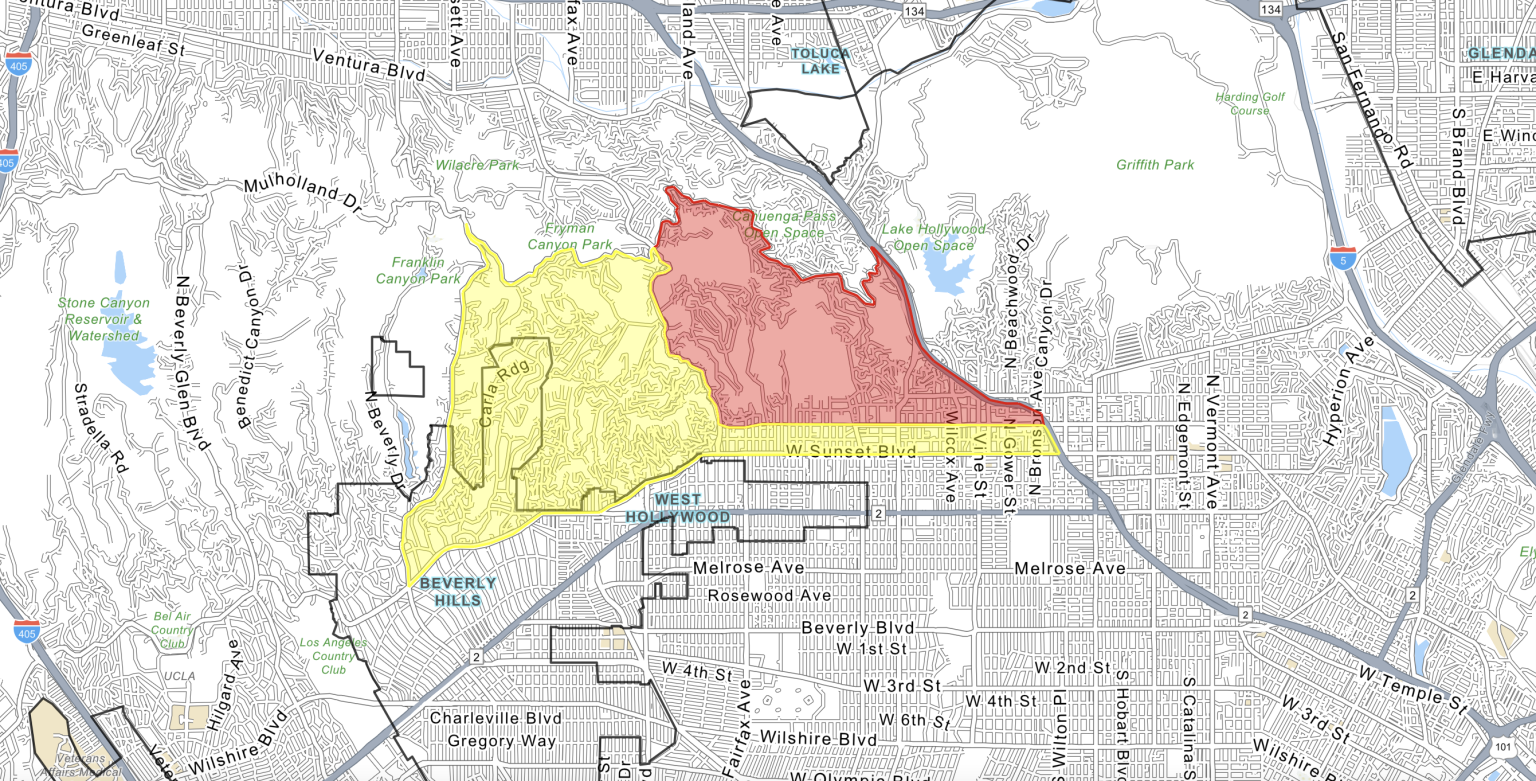The Greater Los Angeles area experienced a surge in wildfire activity during a late Wednesday evening in a concerning escalation of an already dire fire season. A sixth fire, dubbed the Sunset Fire, ignited in the Hollywood Hills, further straining resources as emergency crews were already battling five other significant blazes across the region. This latest outbreak added another layer of complexity to an already challenging situation, forcing authorities to issue immediate evacuation orders for a densely populated area nestled amidst iconic landmarks such as Runyon Canyon, Mulholland Drive, the 101 Freeway, and Hollywood Boulevard. The Sunset Fire, though initially covering a relatively small area of 20 acres, was characterized as “dynamic” and “explosive” by fire officials, highlighting its potential for rapid growth and the urgent need for swift action to protect lives and property. The confluence of dry conditions, strong winds, and challenging terrain created an environment ripe for fire spread, posing significant challenges for firefighters.
The emergence of the Sunset Fire compounded an already precarious situation as fire crews were simultaneously grappling with five other active wildfires: the Palisades Fire, Eaton Fire, Hurst Fire, Lidia Fire, and Woodley Fire. These fires, collectively impacting various parts of the Greater Los Angeles area, underscored the widespread nature of the fire threat and stretched firefighting resources thin. The severe windstorm that swept through the region acted as a catalyst, fanning the flames and accelerating the growth of these fires, making containment efforts significantly more difficult. The cumulative impact of these multiple fires painted a stark picture of the escalating wildfire crisis gripping the region, placing immense pressure on both firefighters and affected communities.
The Sunset Fire’s location, nestled within the Hollywood Hills, presented a unique set of challenges for emergency responders. The steep terrain, dense vegetation, and proximity to residential neighborhoods created a complex operational environment, increasing the risk to both lives and property. The swift issuance of evacuation orders reflected the urgency of the situation and the authorities’ commitment to prioritizing public safety. The fire’s rapid growth and erratic behavior, fueled by strong winds, underscored the dynamic and unpredictable nature of wildfires, emphasizing the need for adaptable response strategies and effective communication to keep residents informed and safe.
The simultaneous outbreak of multiple fires across the Greater Los Angeles area not only stretched firefighting resources but also highlighted the vulnerabilities of the region to wildfire threats. The combined effects of prolonged drought, dry vegetation, and strong winds created an environment conducive to rapid fire spread, posing significant challenges for containment efforts. The sheer number of active fires underscored the scale of the wildfire crisis, demanding a coordinated and multi-agency response to effectively manage the situation. The unfolding events also served as a stark reminder of the increasing frequency and intensity of wildfires in California, highlighting the urgent need for proactive measures to mitigate risks and enhance preparedness.
The situation in the Greater Los Angeles area remained incredibly fluid as firefighters battled to contain the multiple blazes amidst challenging conditions. The Sunset Fire, the latest in a series of outbreaks, added another layer of complexity to an already strained emergency response system. The dynamic and explosive nature of the fire, combined with its location in the densely populated Hollywood Hills, posed a significant threat to lives and property, necessitating swift evacuation orders and a robust firefighting response. The ongoing efforts to contain not only the Sunset Fire but also the five other active wildfires underscored the magnitude of the wildfire crisis gripping the region and the immense pressure on firefighters to protect communities.
As the events in the Greater Los Angeles area continued to unfold, the focus remained on protecting lives and containing the multiple wildfires that threatened communities across the region. The Sunset Fire, with its rapid growth and proximity to residential areas, became a symbol of the ongoing struggle against the destructive power of wildfires. The challenges posed by the steep terrain, dense vegetation, and strong winds emphasized the need for adaptable firefighting strategies and effective coordination among emergency agencies. The cumulative impact of the multiple fires underscored the vulnerability of the region to wildfire threats, highlighting the importance of proactive measures to mitigate risks, enhance preparedness, and build community resilience in the face of increasing fire danger. The ongoing efforts to contain the fires and safeguard lives underscored the dedication and bravery of firefighters working tirelessly under extreme conditions to protect the communities they serve.

